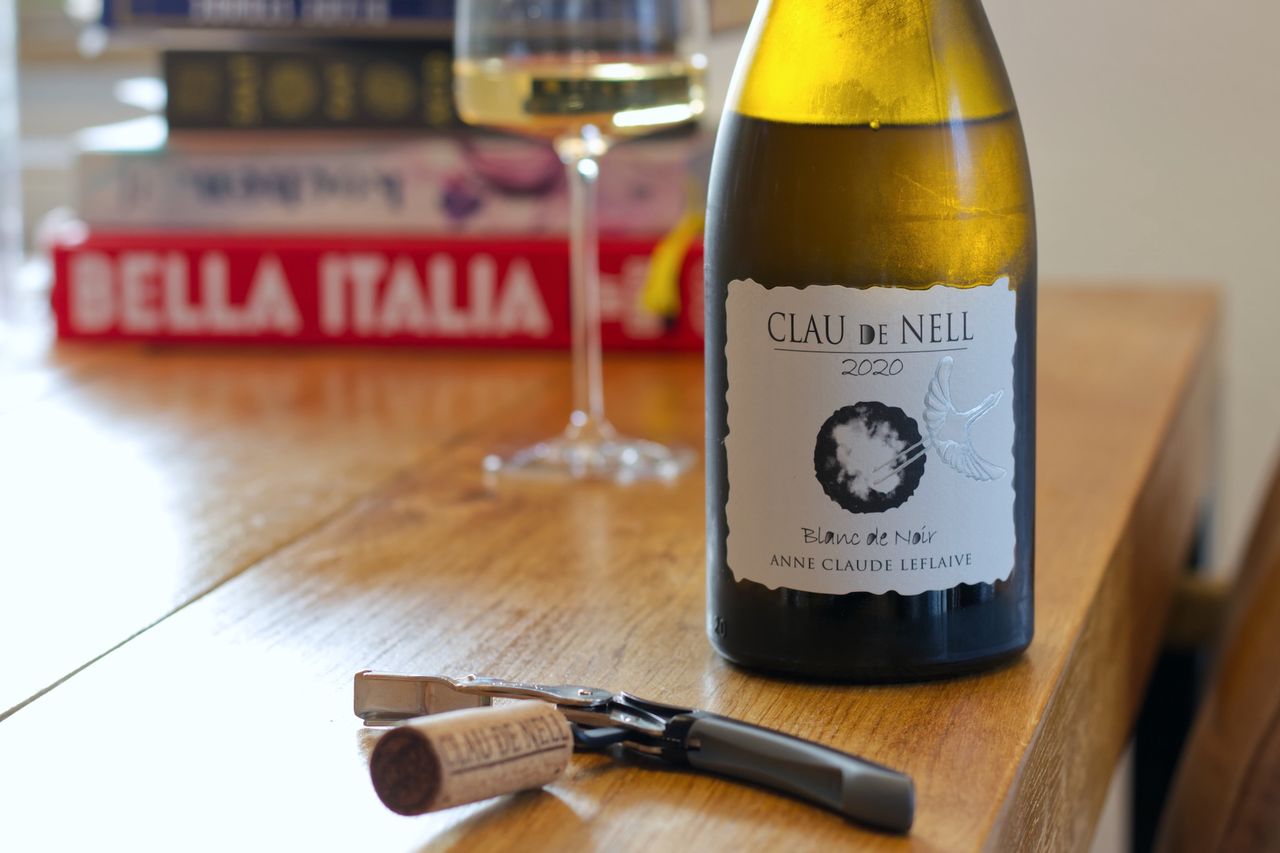Clau de Nell - Blanc de Noir 2020
We are drinking our first Blanc de Noir made from Cabernet Franc, from the 2020 vintage. It is produced by Clau de Nell.

It’s been over three years since a wine from Clau de Nell appeared here. Outside the blog, it’s different, the reds have repeatedly shown up here in normal-sized and double bottles. Only the white wines have somehow never made it here. Five different wines are produced at the winery, three reds and two whites. The Chenin Blanc has been around since the 2015 vintage, while the Blanc de Noir only made it to market in 2021. So today we’re drinking the premiere vintage. We don’t drink a lot of Blanc de Noir. Except for sparkling wine, of course, but that’s somehow different. With still wines, I often feel that Blanc de Noir is made just to have a Blanc de Noir or because customers currently prefer white wine to red wine. This isn’t necessarily reprehensible, but it often lacks seriousness, even more so than with rosé. For those who don’t know, Blanc de Noir is white wine made from red grapes. This works because the wine color is almost entirely in the skin, and if you press quickly enough, the liquid, or mainly the alcohol, doesn’t have time to extract these pigments (along with tannins and flavor) from the skins, and the wine remains more or less light. The Blanc de Noir from Clau de Nell is very light, so either it was pressed very quickly and gently and/or almost all the color in Cabernet Franc is in the skins. In any case, the fact that a single-varietal Cabernet Franc is being white-vinified by a winery I greatly appreciate is reason enough to give it a try. It’s the first Blanc de Noir from Cabernet Franc that I’ve ever consciously encountered and thus the first I’m tasting. The biodynamically grown grapes are hand-picked and (obviously) gently pressed. Then it’s spontaneously fermented and aged in used oak barrels.
Interesting. The wine is a bit waxy on the nose, it’s somehow viscous even when smelling. I don’t want to dwell too long on the association of viscous things in the nose, after all, the hay fever season is currently on pause. There’s puffed grain, quince, and pear. It smells more like Chenin Blanc than Cabernet Franc, in fact, it doesn’t smell like Cabernet Franc at all, but at the same time, it’s incredibly interesting. You can’t find a category for it and discover a new nuance with every sniff. Quite funny, this similarity to Chenin when smelling, as both are rooted in the region. Right after pouring, there was also the idea of red berries, but it disappears so quickly and completely that I don’t know if it was only there because I somehow expected it. In the mouth, the wine is salty, structured, and extremely long. There are herbs and a lot of juiciness and then also the viscosity. An impressive wine that completely turns my image of Blanc de Noir as a still wine upside down.
Day Two doesn’t necessarily make the story easier. The wine remains dense and complex, somewhere between floral aromas and herbal spiciness. The puffed grain is now accompanied by a dab of glue. There’s still no sign of red berries or the scrubby quality that I so enjoy in red Cabernet Franc. But this doesn’t make the wine worse, quite the contrary. The mouthfeel is brilliant, creamy, intense, yellow-fruity, and increasingly long. Blind, I would probably place the wine even further south, it somehow feels like southern France in the type of fruit and also the mouthfeel. The wine is really breaking my category of Blanc de Noir right now, and I love it. To be fair, the bar wasn’t particularly high to jump over. But I actually don’t know any comparable Blanc de Noir, and from Cabernet Franc even less so. It’s becoming increasingly nutty, and you really drink yourself into it. The constant “super delicious” sounds coming from across the table don’t help in preserving the bottle’s contents either. Nothing to be done about that. A truly, truly exciting wine.